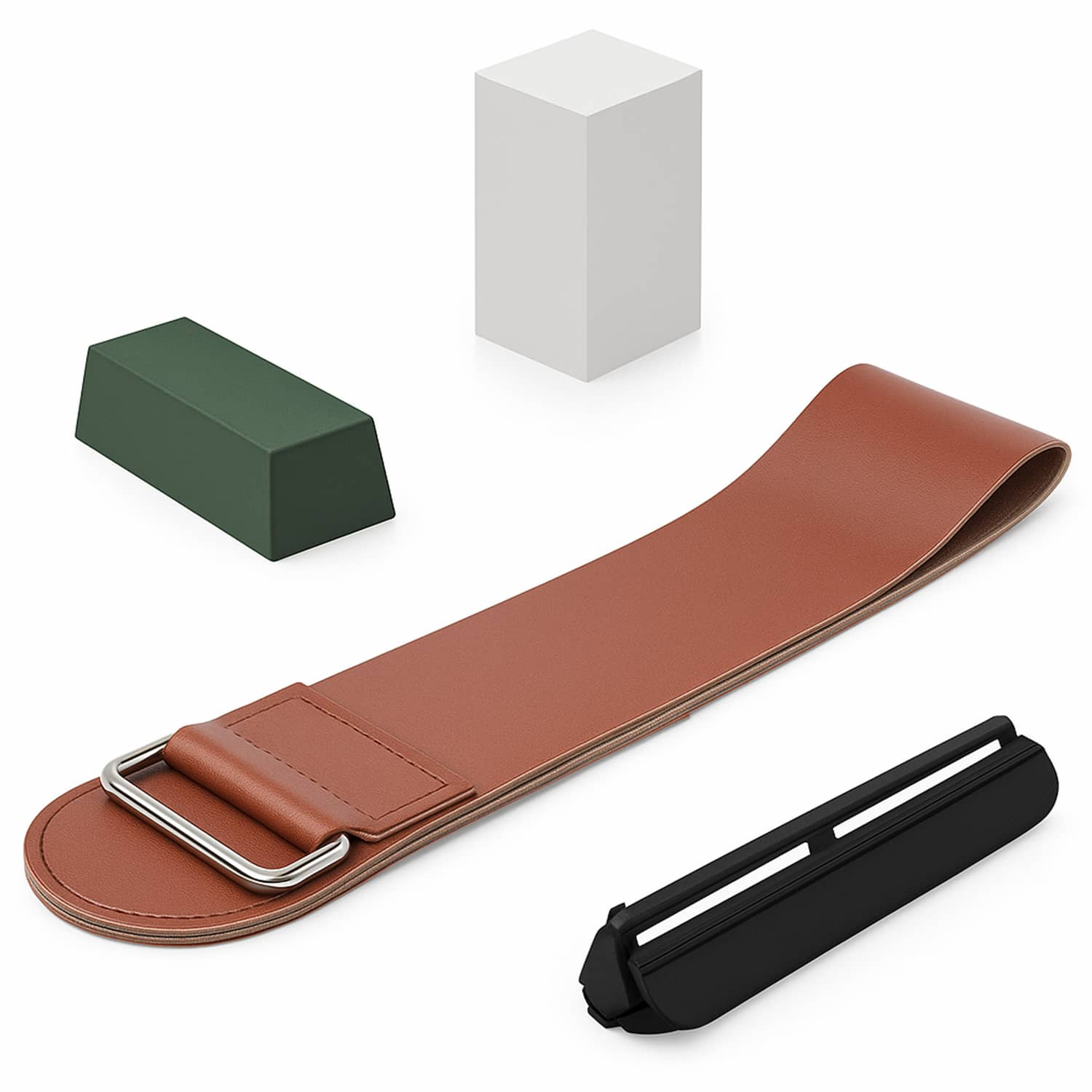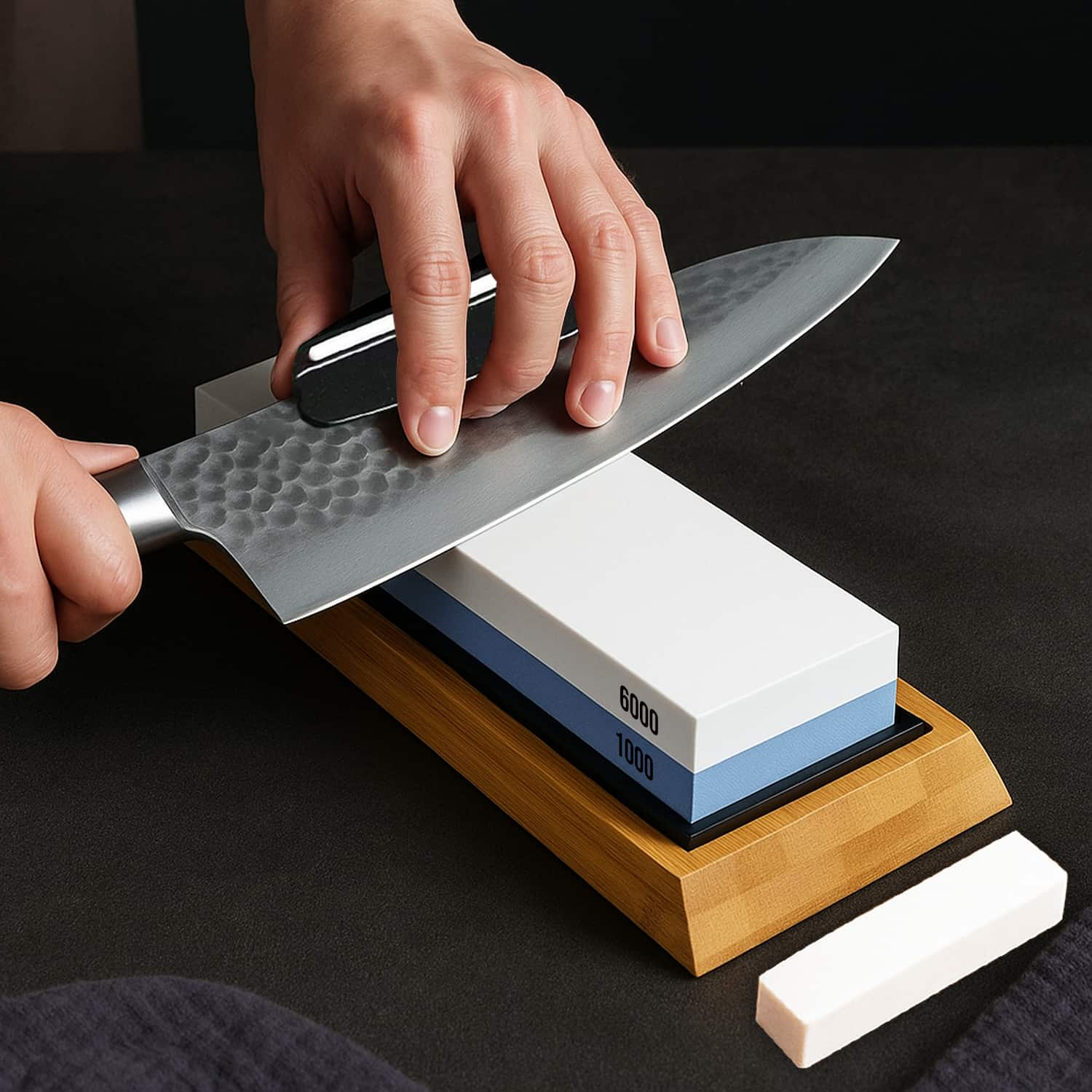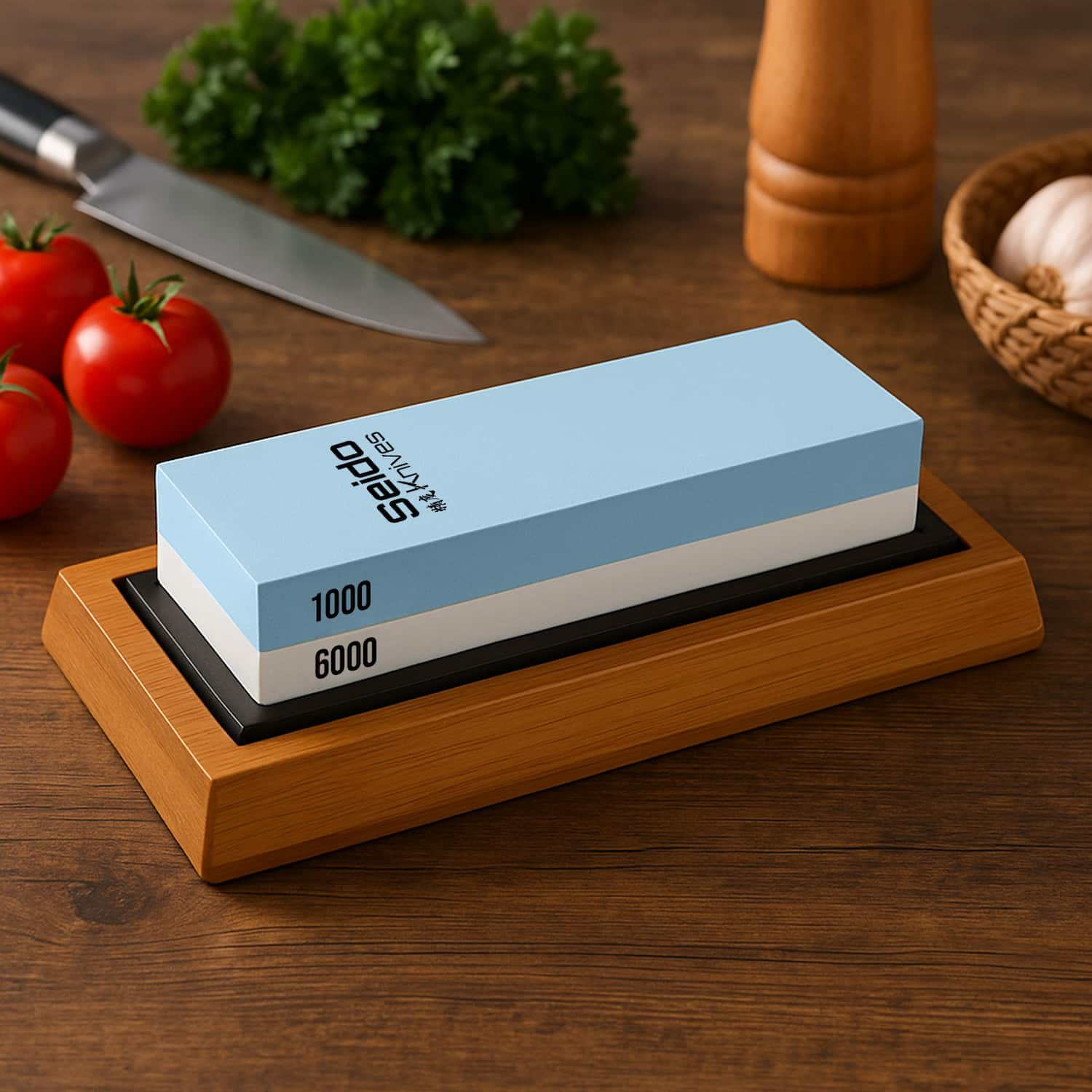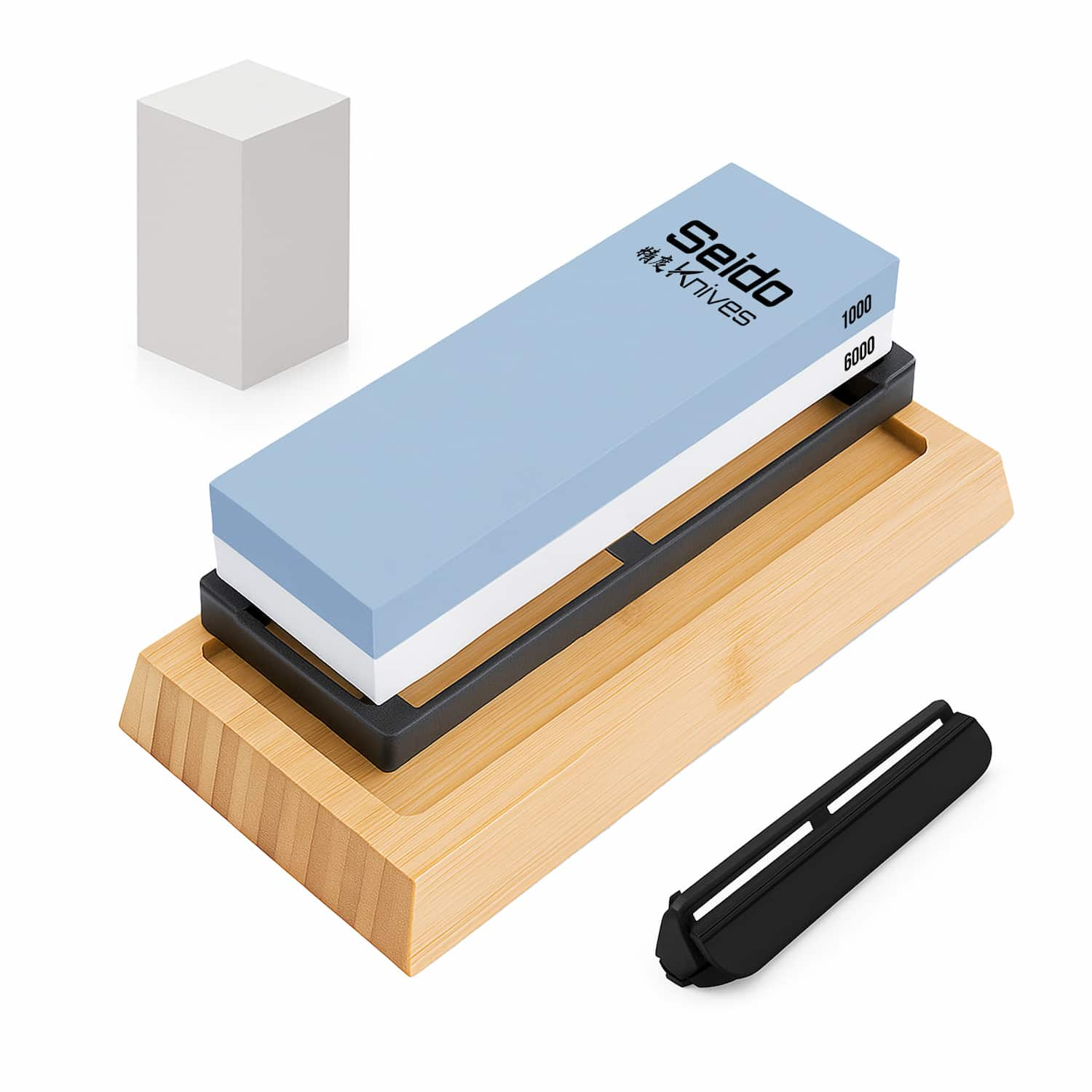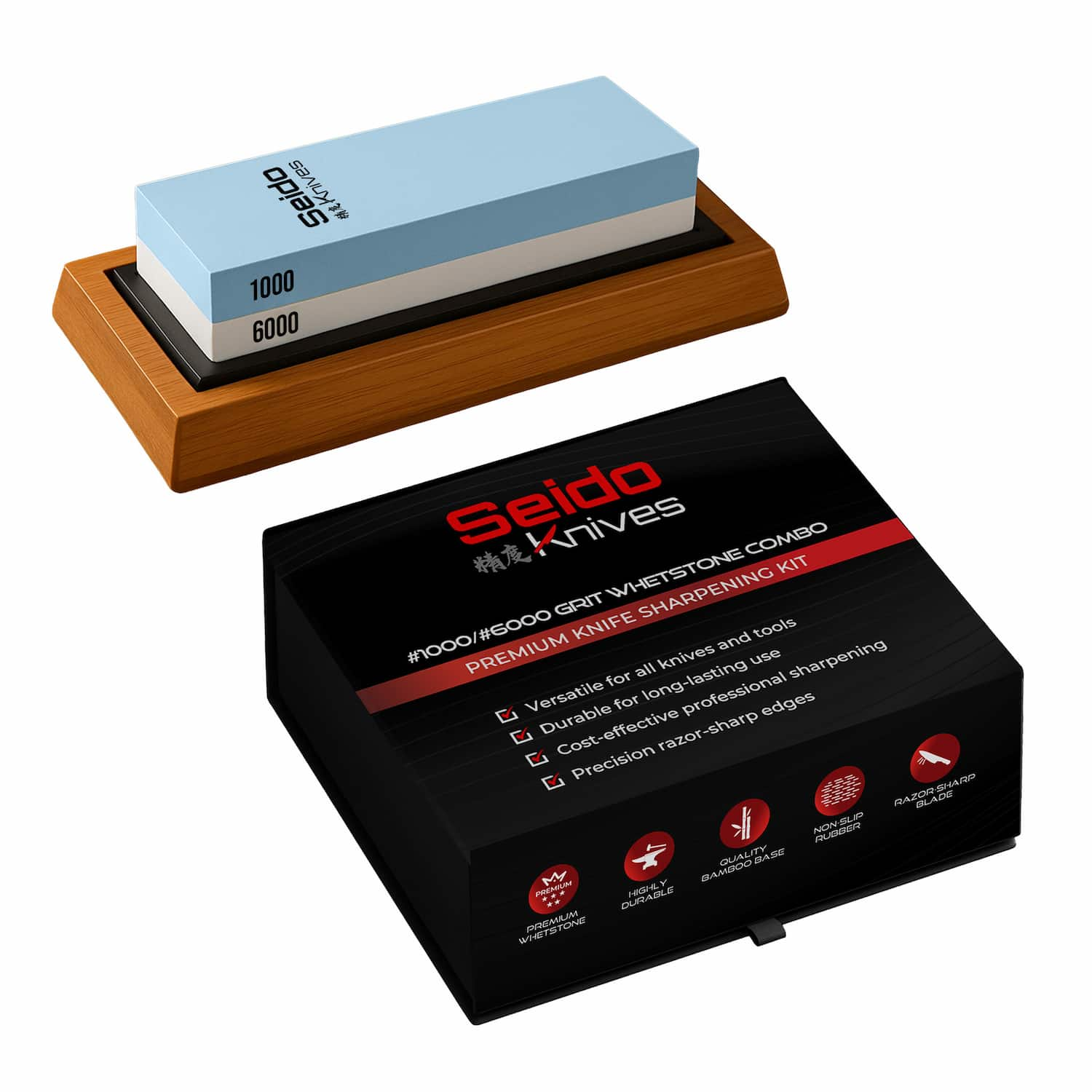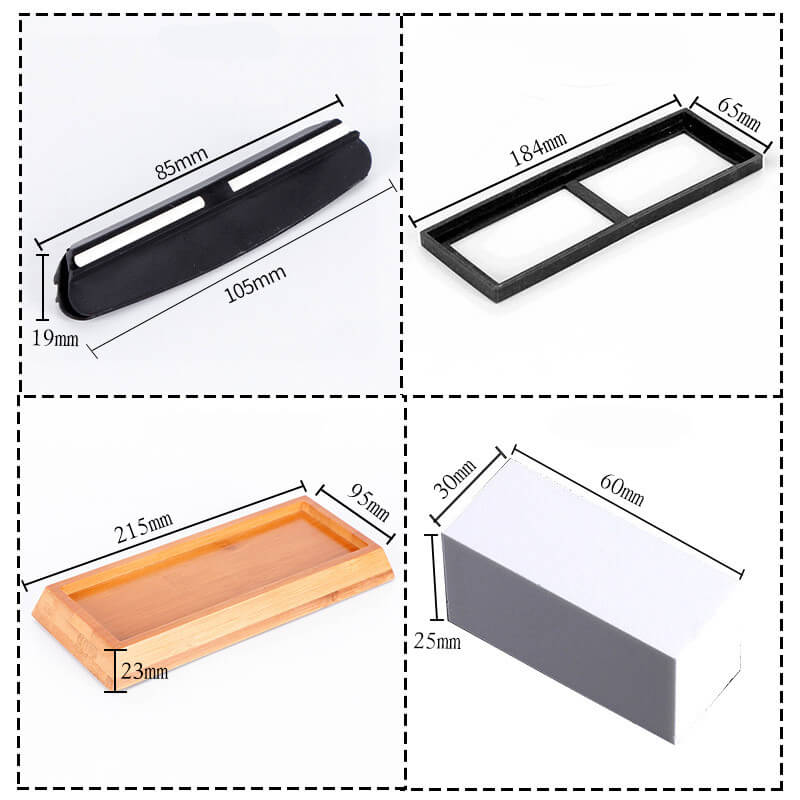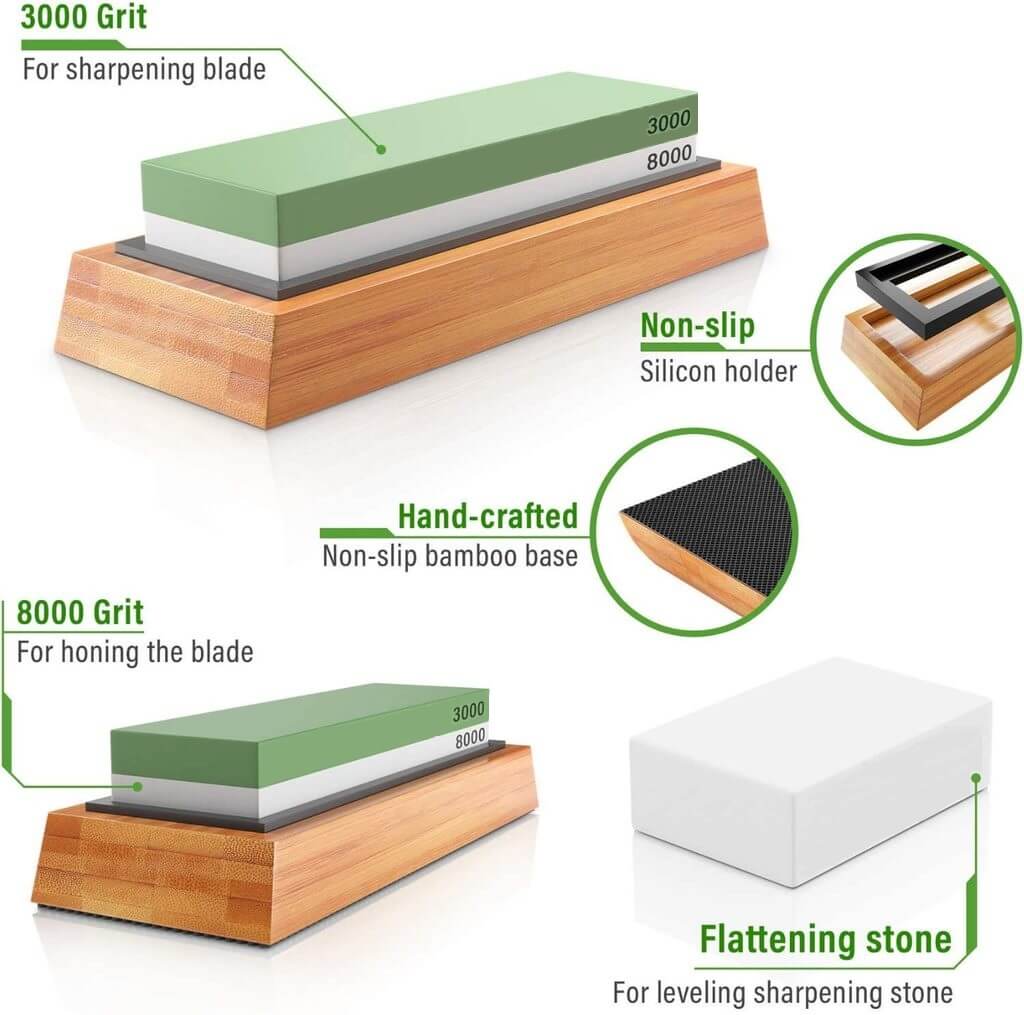
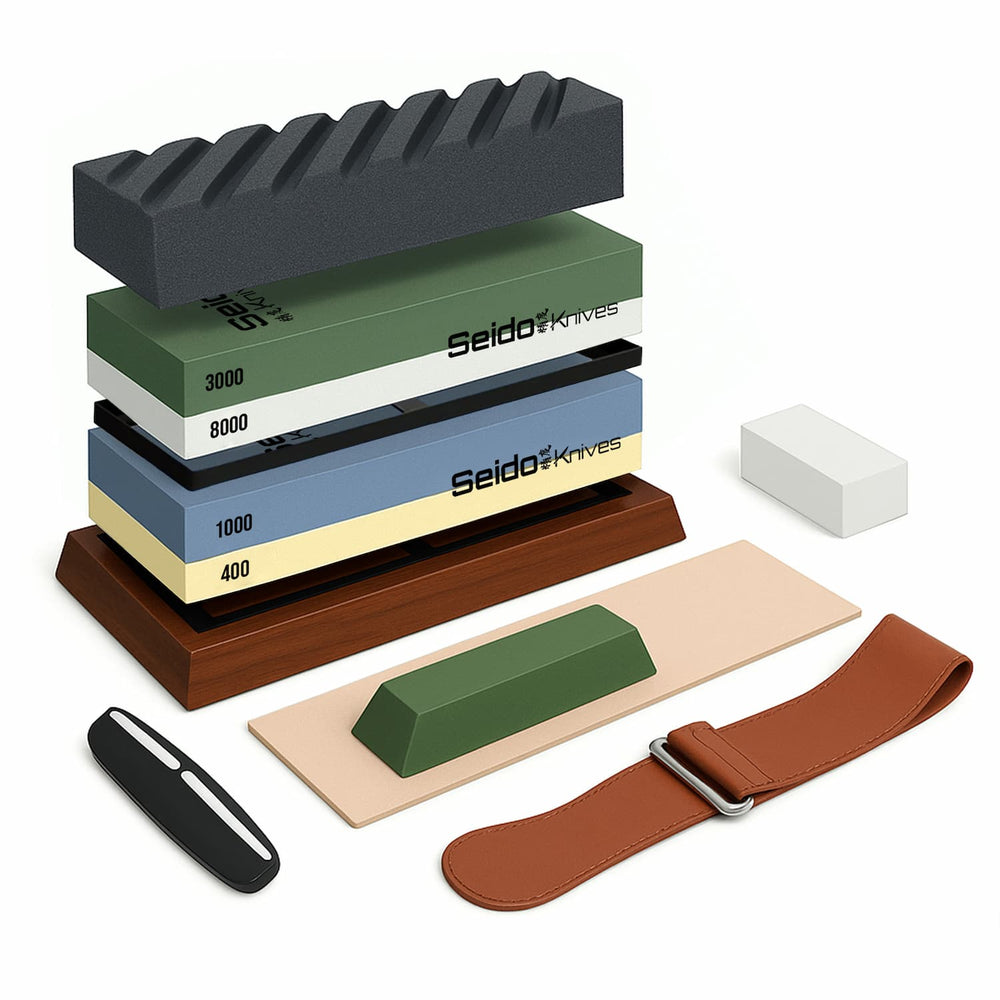
Whetstone Sharpening Stone Set


1000/6000 Grit Whetstone Knife Sharpening Stone


3000/8000 Grit Whetstone


Truing Stone, Flattening Stone
Sharpening your knives on a regular basis is an important maintenance step. Find out the best whetstones available, how to use sharpening stones for knives, and what grits are suited for different blade types.
SHARPENING STONES
When you're cooking meals daily, your knives are going to lose their sharpness. Whetstones are knife-sharpening stones that let you restore dull blades to their original sharpness. At Seido Knives, we offer a variety of knife-sharpening stones that are suited for different needs.

HOW TO USE A WHETSTONE
For whetstone-knife sharpening, follow these steps.
- Soak the whetstone in water for 10-15 minutes. This lubricates the surface.
- Hold your knife at an angle of about 15-20 degrees against the whetstone's surface.
- Starting from the bottom to the tip of the knife, move the blade across the stone.
- Repeat this process for both sides of the knife for a finely honed blade.
WHAT GRIT WHETSTONE FOR KITCHEN KNIVES?
Whetstones have abrasive particles on the stone, which are measured as grit. Coarse grit stones (200-400 grit) are ideal for sharpening very dull blades. Medium-grit stones (800-1000 grit) are ideal for refining the edge of a knife, and fine-grit stones (3000-6000 grit) are ideal for polishing and maintaining a knife's sharpness. For kitchen knives that haven't been heavily used, start with a medium-whetstone grit and finish sharpening your knife with a fine-grit whetstone.
WHAT GRIT WHETSTONE FOR JAPANESE KNIVES?
Japanese knives tend to be more delicate than regular kitchen knives. For this reason, you may want to maintain your knife with a fine-grit stone. If you use your Japanese knife a lot, you can start with a medium-grit stone and finish with a fine-grit stone.
FINDING THE RIGHT SHARPENING STONES FOR YOUR KNIVES
There are a variety of sharpening stones available at Seido Knives. To select the right sharpener for your needs, look at the condition of your knives first. Then choose a stone-knife sharpener to keep your knives razor sharp!











